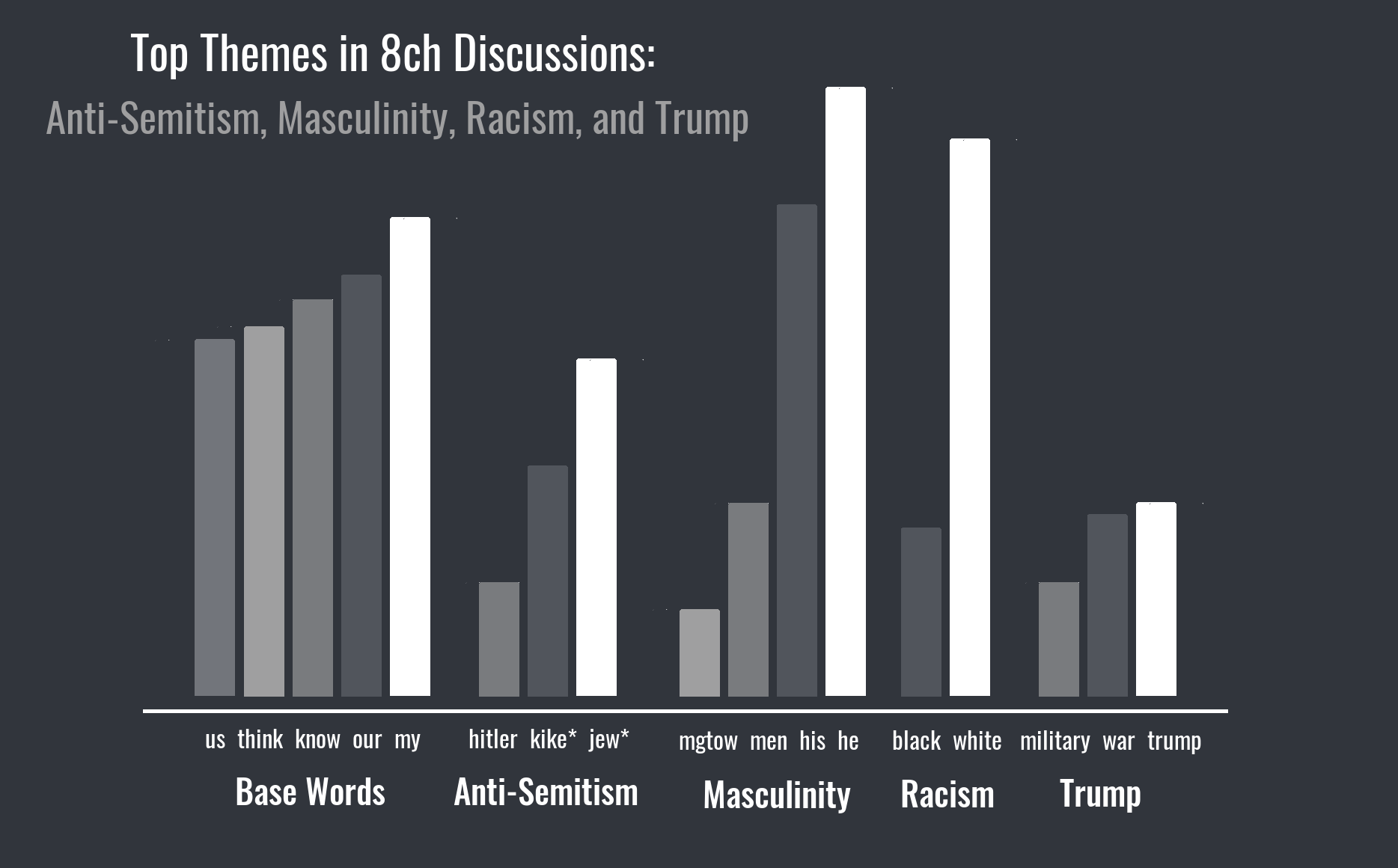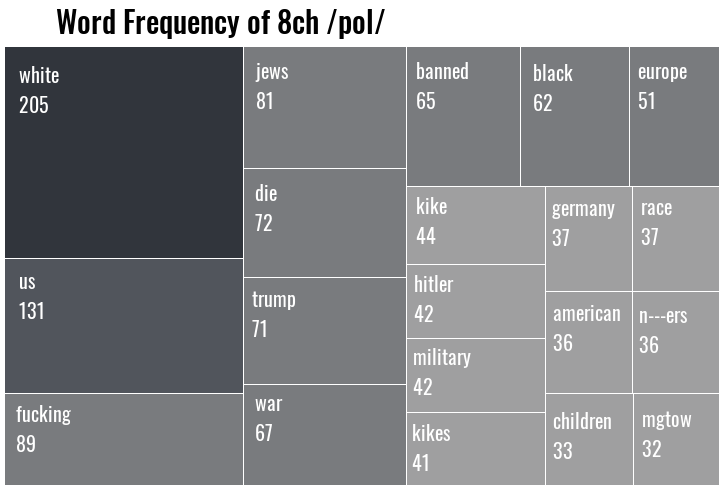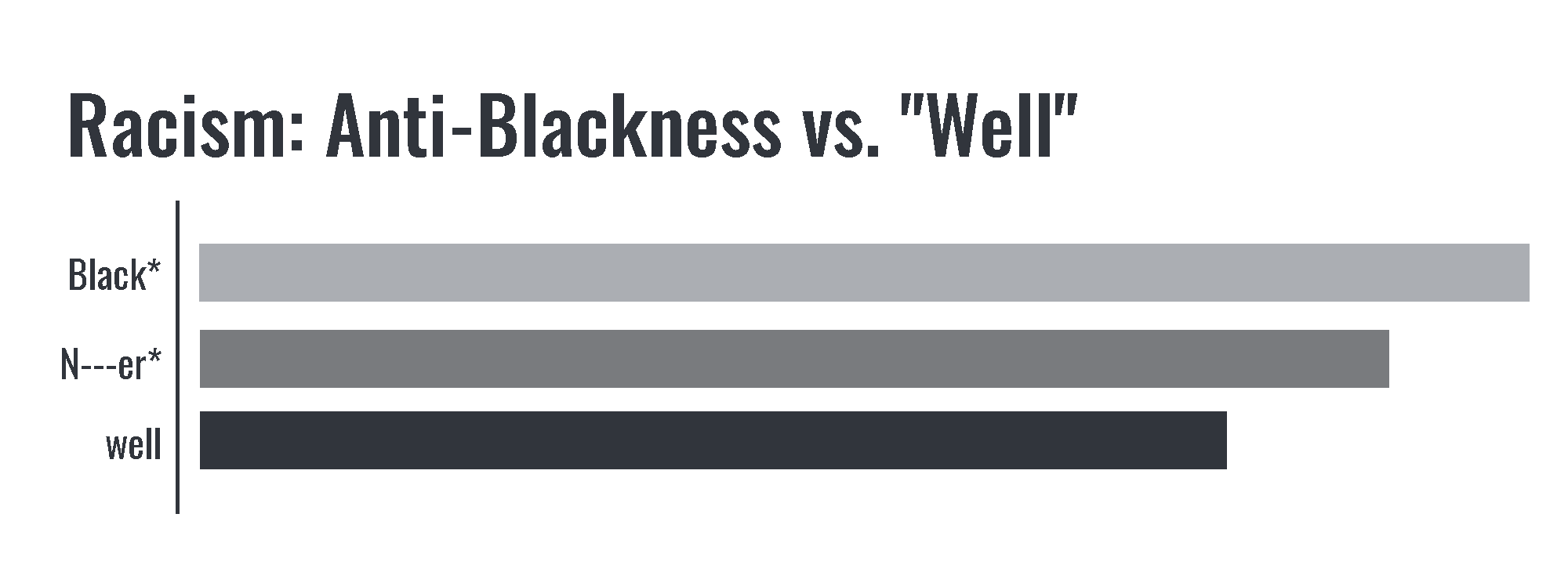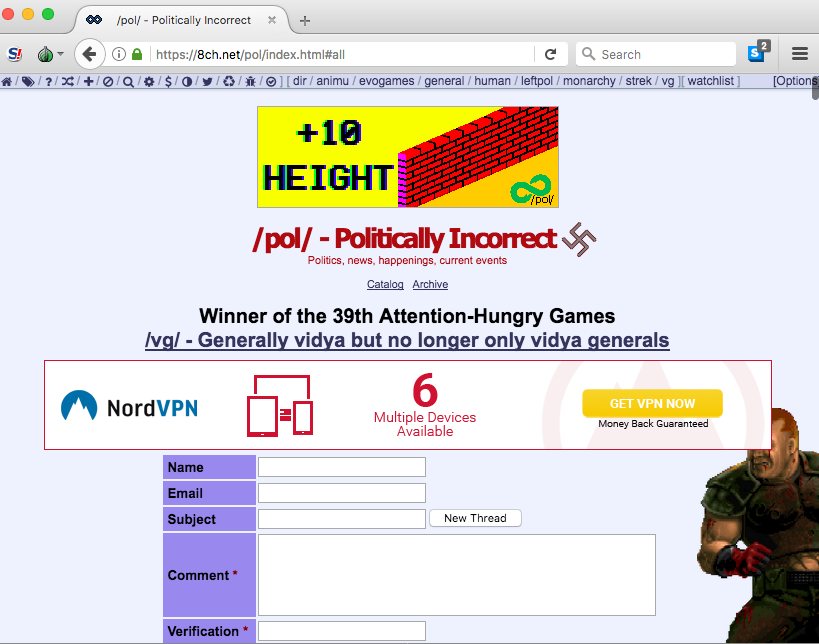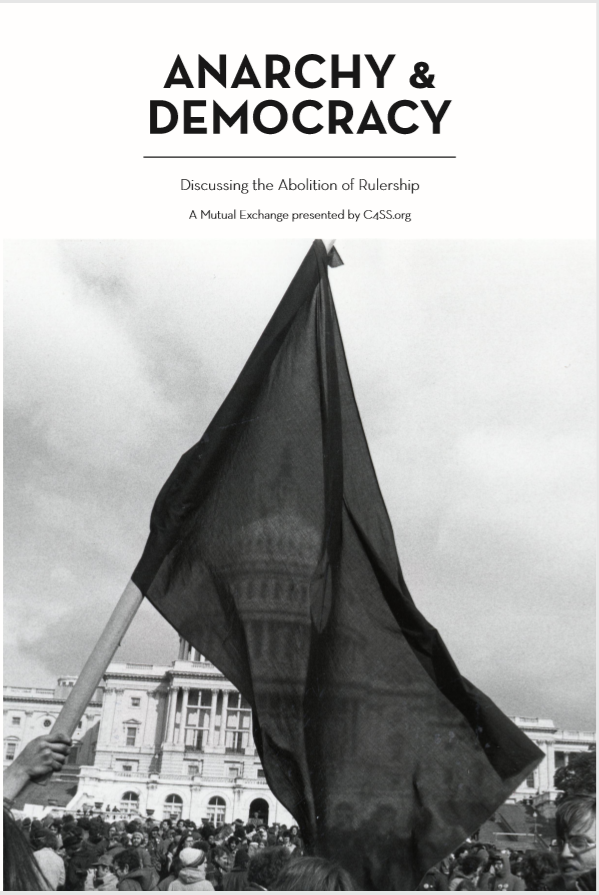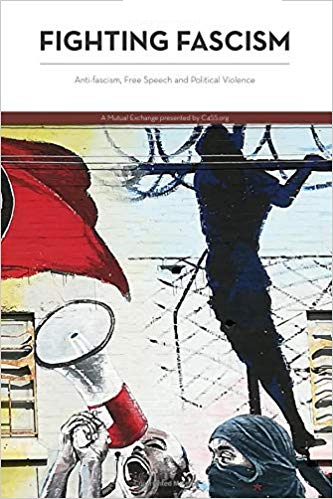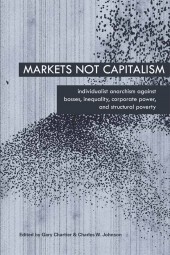Cory Doctorow (2017). Walkaway. New York: Tor
I.
The story opens at a communist party in an unspecified post-industrial town in Ontario sometime in the late middle of this century, from the first-person perspective of Hubert, Etc. A communist party, you should understand, is not an institution but a social event: something like a rave at an abandoned factory where, along with dancing, drinking, drugs, and hookups, illegal acts of post-scarcity are committed. In this case, which is presumably typical, the temporarily recuperated facility is a furniture factory with machinery that’s apparently user-friendly enough a random assortment of intoxicated teens and twenty-somethings can get it up and running and turn out fairly large runs of shelving, beds, or whatever. Using the abandoned machinery and large amounts of abandoned feedstock, one communist party can “do enough furnishings for a couple thousand families” in one evening. The next party is scheduled for a feedstock plant in a neighboring town to keep the supply chain going. And so on.
As Natalie — an attendee at the communist party who becomes a main character — describes it, the whole point of it all is post-scarcity.
Look… at all this. On paper, this place is useless; the stuff coming off that line has to be destroyed. It’s a trademark violation: even though it came off an official Muji line, using Muji’s feedstock, it doesn’t have Muji’s official license, so that configuration of cellulose and glue is a crime. That’s so manifestly fucked up and shit that anyone who pays attention to it is playing the wrong game and doesn’t deserve consideration.
The larger setting is a society in which technology has become so cheap and productive that Muji, the company the factory belonged to, can relocate every few months as its tax holiday ends in one location and another would-be host offers it a bigger subsidy, and abandon the machinery every time as not worth the cost of moving. The main thing standing in the way of this ultra-cheap machinery being unleashed to provide the necessities of life for virtually free to everybody is the patents and trademarks of Muji and companies like it. Machinery is abandoned because it’s cheaper to replace on-site than to move, but communist parties are routinely shut down by police drones enforcing Muji’s monopoly on the right to actually produce things with processes that would otherwise be too cheap to meter.
For those outside the zotta class (and a few million or so of their hired overseers and providers of professional services to them and their overseers), the whole society is made up of precarious laborers who hold on to temp gigs for a few months at a time, with their first few gigs typically being unpaid.
It’s a fictional illustration of Peter Frase’s hypothetical anti-Star Trek scenario, in which matter-energy replicators can produce anything — including other replicators — at zero marginal cost, but capitalists can continue to extract scarcity rents from post-scarcity technology through ownership of patents on the replicators and the designs. That’s the trend in today’s actually-existing capitalism, where the rapid cheapening of production technology means capital’s main source of profit is ceasing to be physical control of the means of production, and profit is instead derived from legal control over the conditions under which people are allowed to produce. The ultimate outcome, if they get their way (which they won’t), is an economy where profit comes not from ownership of the means of production, but from making us sign a EULA to use tools we already own.
The personification of this mentality is Natalie’s zottarich father Jacob Redwater (“zottarich” denoting, in a society where inflation has dovetailed with the concentration of wealth to make astronomical numbers necessary, a level of wealth beyond giga-, tera- and petarich). After bailing his daughter out of trouble in the aftermath of the communist party, he defends the logic of the system in language that’s quite familiar.
Natalie looked grim. “…That factory we switched on last night. It was worth more as a write-off than it was as a going concern. Some entity that owned it demanded that it sit rotting and useless, even though there were people who wanted what it could make.”
“If they wanted the factory, they could buy the factory, Jacob said. “Then make things and sell them.”
“I don’t think these people could afford to buy a factory,” Hubert, Etc said….
“That’s what capital markets are for,” Jacob said. “If you’ve got a plan for profitably using an asset someone else isn’t using, then you draw up a business plan and take it to investors. If you’re right, one of them will fund you….”
“What if no one invests?” Hubert, Etc said….
Jacob took on the air of someone explaining a complex subject to a child. “If no one wants to invest, that means that you don’t have an idea worth investing in….”
“Don’t you see the circularity there?” Natalie said. If you can’t convince someone to turn on the factory to make things that people need, then the factory shouldn’t be turned on?”
“As opposed to what? A free-for-all? Just smash down the doors, walk in and take over?”
“Why not, if no one else is doing anything with it?”
The talking-to-a-toddler look: “Because it’s not yours.”
Jacob’s logic is even more circular than Natalie points out. In any rational society, the factory would be considered abandoned. And obviously, running the abandoned factory to produce furniture at near-zero marginal cost isn’t worth investing in, because the main source of profit is using the state to prevent the factory from being used. In a society where production costs next to nothing, profit results from the right to prevent production that can’t be sold for a monopoly price.
“What do you think about breaking into private property and stealing what you find there?”….
“No one was using it…. The hydrogen cells’d filled up. So the windmills were going to waste. The feedstock was worth practically nothing.”
Natalie said, “What’s the point of having private property if all it does is rot?”
“Oh, please. Private property is the most productive property. Temporary inefficiencies don’t change that. Only kooks and crooks think that stealing other property is a valid form of political action.”
But Jacob’s circular logic is necessary, as Natalie points out.
He wants to be the one percent of the one percent of the one percent because of his inherent virtue, not because the system is rigged. His whole identity rests on the idea that the system is legit and that he earned his position in it fair and square and everyone else is a whiner.
That same desire, in the real world, is the reason billionaires like the Koch brothers pour so much money into pet right-libertarian think tanks just to churn out second-hand pablum justifying their wealth. And it’s a successful strategy, at least with some people; all you have to do is check the reply threads under any social media post critical of Jeff Bezos or Elon Musk to see dozens of sycophants saying some variation of “Who cares? It’s his money — he earned it” or “If you don’t like it work harder and earn some money of your own.” And beneath this meritocratic myth is an even uglier Hobbesian myth.
“…I think that the tragedy of human existence is our world is run by people who are really good at kidding themselves, like your father. Your dad manages to kid himself that he’s rich and powerful because he’s the cream and has risen to the top. But he’s not stupid. He knows he’s kidding himself. So underneath that top layer of bullshit is another, more aware belief system: the belief that everyone else would kid themselves the same way he does, if they had the chance….
“His beliefs don’t start with the idea that it’s okay to kid yourself you’re a special snowflake who deserves more cookies than all the other kids. It starts with the idea that it’s human nature to kid yourself and take the last cookie, so if he doesn’t, someone else will, so he had better be the most lavishly self-deluded of all, the most prolific taker of cookies, lest someone more horrible, immoral, and greedy than he gets there first and eats all the cookies, takes the plate, and charges rent to drink the milk.”
I suspect there’s yet another, equally twisted layer to this ideology. Deep down they believe that if people are left to their own devices, without being kept busy with the requirement to work in order to survive, they’ll run wild and wreck all the progress that people like Jacob Redwater have painstakingly built up over the millennia. People are naturally self-centered, short-sighted, and amoral, and stable societies are only possible when equally amoral — but more intelligent — elites keep them in line. It’s necessary to destroy abundance in order to preserve society.
In the same conversation Hubert, Etc disposes of Garrett Hardin’s “tragedy of the commons” with the contempt it deserves.
“Sounds like bullshit to me.”
“Oh, it is…. It’s more than mere bullshit. It’s searing, evil, world-changing bullshit. The solution to the tragedy of the commons isn’t to get a cop to make sure sociopaths aren’t overgrazing the land, or shunning anyone who does it, turning him into a pariah. The solution is to let a robber-baron own the land that used to be everyone’s, because once he’s running it for profit, he’ll take exquisite care to generate profit forever.”
“That’s the tragedy of the commons? A fairy tale about giving public assets to rich people to run as personal empires because that way they’ll make sure they’re better managed than they would be if we just made up some rules? God, my dad must love that story.”
“It’s the origin story of people like your dad,” Hubert, Etc said….
II.
In a discussion of alternatives for reform, none of which seems to be satisfactory or politically viable, Hubert, Etc raises the question that the rest of the book spends answering: “What about walkaways?…. Seems to me that they’re doing something that makes a difference. No money, no pretending money matters, and they’re doing it right now.” Hubert, Natalie, and their friend Seth decide to check it out.
In keeping with convention for this genre, the reader is introduced to the utopian society through the eyes of the three outsiders and learns its mechanics along with them.
The walkaway society — which apparently emerged a decade or so earlier — exists in areas on the margins of neoliberal capitalism, mainly in rural or decaying places not worth enforcing territorial control over, and using waste or abandoned materials similarly not worth enforcing ownership of. Its largely post-scarcity and communistic economy is an ad hoc mix of high-tech open-source hardware hacking, p2p organization, and vernacular materials and design.
The Belt and Braces Inn, where the three travelers initially make contact with walkaway society, is our introduction to its basic principles. It’s a sort of combination restaurant/pub, hostelry, community hub, and co-living space. The Belt and Braces was built from scavenged materials located by surveillance drones, and put together according to an evolving wikified design by stigmergically organized, permissionless labor using a modified version of UN High Commission on Refugees software.
You told it the kind of building you wanted, gave it a scavenging range, and it directed its drones to inventory anything nearby, scanning multi-band, doing deep database scrapse against urban planning and building-code sources to identify usable blocks for whatever you were making….
These flowed into the job site. The building tracked and configured them, a continuously refactored critical path for its build plan that factored in the skill levels of workers or robots on-site at any moment.
The B&B power source was hydrogen fuel cells, recharged by wind-driven electrolysis of waste water.
As mentioned before, not only the construction process, but all day-to-day activities were governed by walkaway society’s combined ethos of permissionlessness and freedom from work ethic: “You’re not supposed to covet a job, and you’re not supposed to look down your nose at slackers, and you’re not supposed to lionize someone who’s slaving. It’s supposed to be emergent, natural homeostasis….” As explained by Limpopo, a veteran member of B&B: “Asking someone if you can pitch in is telling them that they’re in charge and deferring to their authority. Both are verboten. If you want to work, do something. If it’s not helpful, maybe I’ll undo it later, or talk it over with you, or let it slide.”
Another illustration of the technological basis of the walkaway economy is a community built in the relatively early days of walkaway culture, as recounted by Limpopo:
We’d built rammed-earth houses on the escarpment, two dozen of them. Real refu-luxury: power, water, fresh hydroponics, and soft beds. Took about three hours a day each to keep the whole place running. Spent the rest of the time re-creating a Greek open-air school, teaching each other music and physics and realtime poetry. It was sweet. I helped build a pottery and we were building weird wheels that did smart adaptic eccentric spinning in response to your hands and mass, so that it was impossible to throw a non-viable pot.
The harshest bit of the three new walkaways’ introduction to the new society was discovering their travel gear had been ripped off. Limpopo took that as a teachable moment for explaining the minimalist ethos of traveling light, keeping information backed up, and treating physical goods as replaceable.
The latter point was driven home by their visit to the community fablab, more or less standard for all walkaway settlements, where they replaced their stolen gear. The process involved shopping through the fablab’s large inventory of designs for just about any kind of good anyone could imagine, adding the selections to a checkout basket along with size and other options specified, and executing the production cycle (which usually took a few hours). It could be done faster, “but this rate allows us to use feedstock with more impurities by adding error-correction passes.” The inventory included medicine produced by wet-printers.
Communications infrastructure was largely ad hoc and with high degrees of latency; connectivity was sporadic, often involving large data dumps when broken connections were routed around or relay airships came into range and reestablished connection.
Some of the best R&D in the world took place at the various Walkaway U campuses.
For a decade, word around the world’s top research institutions was that the most creative, wildest work happened in walkaway. It leaked into default: Self-replicating beer and semi-biological feedstock decomposers that broke down manufactured goods into slurries ready to be dumped into printers. A lot of radio stuff, things you could only pull off through cooperative models of spectrum management, where any radio could speak in any frequency, all radios cooperating to steer clear of each other, dynamically adjusting their gain, shaping their transmissions with smart phased arrays.
One reason for walkaway’s superior technology is the absence of the proprietary capitalist restraints on progress.
“You know, when the first walkaway prostheses projects started, most of the people contributing had lost an arm or a leg in Belarus or Oman, and were tired of paying a loan shark for something that hurt and barely worked and could be remotely repossessed by an over-the-air kill-switch if they missed a payment. But once they got here and started living, realized how much had been left on the table by conservative companies that didn’t want to get into a patent fight and didn’t see any reason to add advanced functionality to something that you didn’t have any choice about, they got radicalized.
“They stopped saying ‘I just want to make an arm that’ll get through the day,’ and started saying ‘I want an arm that does everything my old arm did.’”
As Cory Doctorow has noted, he intended walkaway society’s discouragement of work ethic and reputation-scoring as a deliberate contrast to the Bitchun Society of Down and Out in the Magic Kingdom, where a reputational mechanism (“whuffie”) was used to allocate scarce goods like personal attention, preferred locations, etc. As explained by Limpopo:
“If you do things because you want someone else to pat you on the head, you won’t get as good at it as someone who does it for internal satisfaction. We want the best-possible building. If we set up a system that makes people compete for acknowledgement, we invite game-playing and stats-fiddling, even unhealthy stuff like working stupid hours to beat anyone. A crew full of unhappy people doing substandard work. If you build systems that make people focus on mastery, cooperation, and better work, we’ll have a beautiful inn full of happy people working together well.”
III.
A question that always arises, in discussions of interstitial projects that involve “building the new society in the shell of the old,” is how the old and new society get along and whether the old society just lets it happen. Will neoliberal society shut down post-capitalist experiments like it did Allende’s Chile? Will US or EU drones and mechas destroy server farms in Iceland to enforce global copyright accords, or engage in house-to-house fighting to stamp out federations of commons-based municipal projects in Europe?
In this case the old society — “default,” in walkaway slang — largely ignored walkaway society for most of its history until around the time of the story. There were sporadic attacks by state military forces on walkaway settlements, variously justified as reprisals for “harboring fugitives,” “terrorism,” and “intellectual property violations.” But they were mostly just that — sporadic. Walkaway society served as a safety valve for the surplus population of default society, without seriously challenging the zottas’ economic exploitation of those who remained in their jurisdiction.
But in the time-frame of Walkaway, there’s been a sharp uptick in the number and severity of government and corporate military attacks. The reason for the change is that walkaway scientists — themselves in large part deserters from default institutional science who find the walkaway atmosphere more congenial — are on the verge of achieving a breakthrough in human immortality before their counterparts in default. Since the whole zotta project involves withdrawing into fortified city-states, space platforms, and other stately pleasure domes — and ultimately achieving immortality while they abandon the rest of the human race as superfluous — the idea that a bunch of dirty fucking hippies might beat them there is intolerable.
What’s more, the idea that the zottas might speciate into a separate immortal race, on top of all the other indignities they inflict on humanity, is undermining their legitimizing ideology and rendering subject populations less governable. Hence the zottas are even more desperate to ensure that they reach the goal first.
“It’s one thing to imagine a life of working to enrich some hereditary global power broker when you know you got eighty years on the planet, and so does he…. But the thought of making those greedy assholes into godlike immortals, bifurcating the human race into infinite Olympian masters and mayflies, so they not only get a better life than you could ever dream of but they get it forever…”
She sighed. “They’re scared. They keep raising salaries, doesn’t matter. Offering benefits, doesn’t matter. Stock, doesn’t matter. A friend swears some zotta was trying to marry him into the family, just to keep him from defecting… It’s a race: either the walkaways release immortality to the world, or the zottas install themselves as permanent god-emperors.”
Researchers at Walkaway U successfully scan and upload a human mind to computer hardware for the first time, figuring out how to keep the personality running on a meta-stable basis without existential meltdown spinning into an out-of-control positive feedback cycle.
The prospect of human immortality is the ultimate development of the walkaway ethos of minimalism and non-attachment. Any physical good can be replicated in a fab lab in hours. Settlements can be rebuilt from scavenged materials bigger and better in a matter of months if they’re taken over or destroyed (as the B&B was at one point in the story). And now the same promises to become true of the human body as an accessory to consciousness. It will be possible to literally “walk away” from anything and start over.
Watching the new B&B conjure itself had been a conversion experience, a proof of the miraculous on Earth. They’d walked away from the old B&B when those assholes had shown up, and pulled a new one from the realm of pure information. That was their destiny. Things could be walked away from and made anew; no one would ever have to fight. Not yet — they couldn’t scan people at volume, couldn’t decant them into flesh. But there would come a day… when there would be no reason to fear death. That would be the end of physical coercion. So long as someone, somewhere, believed in putting you back into a body, there would be no reason not to walk into an oppressor’s machine-gun fire, no reason not to beat your brains out on the bars of your prison cell….
IV.
Of course the zottas realize this as well. With indisputable news of walkaway’s achievement of human immortality, the previous generation’s Cold War between default and walkaway turns very hot. Walkaway settlements all over the world are raided, obliterated, and have their populations either exterminated or taken into captivity.
At the same time, the dramatic rupture and sense of revolutionary momentum motivates entire cities within default jurisdictions — Akron, Liverpool, Minsk, and others — to go rogue and transform themselves into revolutionary walkaway communes. Take Akron, for instance:
Walkaways did a coordinated mass squat on the whole downtown, 85 percent of which was boarded up and underwater…. They’d flown under the radar, smooth and coordinated. One day, Akron was haphazardly squatted by homeless people, the next, a walkaway army reopened every shuttered building, including fire stations, libraries, and shelters. Factories turned into fabs, loaded with feedstock, powered by eggbeater fields that sprung up overnight, electrolyzing hydrogen from sludge flowing in the Little Cuyahoga River, feeding hydrogen cells that walkaways wrestled around in wheelbarrows.
Default was caught off guard. Connecticut flooding had FEMA and the National Guard tied up. The contractors who backstopped FEMA couldn’t use their normal practice of hiring local talent as shock troops. By the time they mobilized, their entire recruiting pool was walkaway.
It gave the Akron walkaways — they called themselves an “ac-hoc,” said they were practicing “ad-hocracy” — a previous week to consolidate. By the time default besieged Akron, they were a global media sensation, source of endless hangouts demonstrating a happy world of plenty salvaged from a burned husk with absentee owners.
The effect of the first genuine walkaway cities is revolutionary. Until the outbreak of open warfare, walkaway “tend[ed] to be a building or two, a wasp’s nest wedged in a crack in default,” in order to avoid presenting anything default would consider a threat to be destroyed.” The emergence of walkaway communities on the scale of Akron amounted to “walk towards.” In response to Limpopo’s prediction that the government would nuke Akron before allowing it to stand as an example, another B&B member — Tam — replied: “Seriously, fuck that. The point of walkaway is the first days of a better nation. Back when that was more than an eye roll, it was a serious idea. Someday, walkaway and default will swap places.”
Of course default responds by brutally suppressing the rogue cities. The US army and private contractors advanced in force with drones, mechas, and armored vehicles, officially in the name of fighting “the Four Horsemen” always used to justify state terror by imperialist nations: “pornographers, mafiosi, drug dealers, and terrorists.”
The two dozen buildings targeted by air strikes included a hospital, on the pretext that it was producing biological warfare agents. In reality it was printing out ebola and H1N1 vaccines without licenses. Missiles and aerostats also took out the city’s Internet with strikes on the fiber optic infrastructure and wireless routers. Next, the “boots on the ground phase,” tasing and tear gassing by “pacifier bots,” ensued.
But the assault on Akron only caused efforts to escalate on the walkaway side. Akron itself didn’t just roll over, and the repression inspired a worldwide support network to engage in resistance.
That was the push; then came the pushback. The walkaways and Akronites who’d assumed control of the city planned for this kind of shock/awe. They had bunkers, aerostat-seeking autonomous lasers, dark fiber backups that linked up to microwave relays far out of town, offline atrocity-seeking cameras that recorded footage automatically when the network went dark, crude HERF weapons that stored huge amounts of solar energy whenever the sun shone, ready to discharge in a powerful whoomf the moment they sensed military spread-spectrum comms.
Once the word got out about Akron, there was online pushback, too. Walkaways all over the world battered at the comms and infrastructure of the contractors in the vanguard, the DHS, the DoD, the White House internal nets, the DNC’s backchannels, Seven Eyes chatter nets — the whole world of default super-rosa and sub-rosa connectivity. Walkaway backbones prioritized traffic out of Akron, auto-mirrored it across multiple channels.
The walkaway propaganda machine was also going full-blast, with suicide drones capturing and transmitting footage of atrocities despite default’s efforts to censor events in Akron from the mass media and control the narrative. Soldiers and private mercenary contractors were identified from video footage and doxxed, and open letters sent to their families to shame them. The doxxings often started a chain reaction of defections and destroyed morale.
Kids left home, leaked their parents’ private documents implicating their superiors, publishing secret-above-secret rules of engagement with instructions to use lethals when cameras were off, to buy evidence, or implicate insurgents in atrocities. Sometimes parents disowned children who’d done zottas’ dirty work, publicly disavowing slaughter. It split families and communities, but it also brought new ones together.
The ripple effect resulted in general strikes, and mass demonstrations in major cities on a scale sufficient to absorb all police resources — after which new demonstrators continued to pour into the streets. In some places walkaway prisoners were freed when guards simply unlocked the doors and abandoned their jobs.
Meanwhile, Akron itself was rebuilt after the jackboots withdrew from the scene.
The new Akron, built on the site of the leveled buildings, refused to be a graveyard. The people who’d flocked to it to rebuild after the army and the mercs and the guardsmen had joined returning locals to build new kinds of buildings, advanced refugee housing straight out of the UNHCR playbook, designed to use energy merrily when the wind blew or the sun shone, to hibernate the rest of the time. The multistory housing interleaved greenhouses and hydroponic market-gardens with homes, capturing human CO2 and giving back oxygen. They were practically space colonies, inhabited by some of the poorest people in the world, who adapted and improved systems so many other poor people had improved over the disasters the human race had weathered. The hexayurt suburbs acted as a kind of transition zone between default and the new kind of permanent walkaway settlement, places where people came and went, if they decided that Akron wasn’t for them.
Akron wasn’t the first city like this — there was Lodz, Capetown, Monrovia. It was the first American city, the first explicitly borne of the crackdown on walkaways. It put the State Department in the awkward position of condemning a settlement that was functionally equivalent to many it had praised elsewhere.
The wave of all-out violence between default and walkaway — popularly named World War Default — was followed, after an interval of turbulence, by the Walkaway Decade. Default more or less folded on its efforts to violently eradicate walkaway society, although the zottas persisted in their strongholds (“walled cities, the Harrier-jet-and-mountaintop set”) and default society persisted to a greater or lesser degree as contested terrain. Projects on the Akron model continued to spread among rust-belt towns like Gary, some of them technically the property of holding companies that had bailed them out of bankruptcy. All kinds of default facilities were simply abandoned and converted to walkaway use, like an enormous private prison complex outside Kingston, Ont. previously owned by TransCanada. The refurbishment project “followed a template that was developed and formalized in the stupidly named ‘Walkaway Decade.’”
Some walls came down, others went up. They’d build rammed-earth machines and add sprawling wings and ells, almost certainly an onsen, because that was de rigueur at anything walkaway bigger than a few people.
The rhythm of the place would change. On days when the sun shone or the wind blew, they’d run coolers with abandon, heat huge pools of water for swimming and bathing, charge and loose drones and other toys. When neither were around, the buildings would switch to passive climate control, the people would switch activities to less power-hungry ones.
Iceweasel (formerly Natalie) tries to tell a resurrected Limpopo, several years after the war, how much things have changed.
“Limpopo,” Iceweasel said, softly. “It’s not like that anymore. Default isn’t the default. I know what it was like. It looked like war, they were going to lock us away or kill us. It changed. The zottas went to war against each other, fought for control over countries whose people refused to fight for any side, walked away with us, turned refugee living into the standard. It was the people who stayed in one place and claimed some chunk of real estate was no one else’s became weirdos. Everyone else hit the road when those people showed.
…“There are enclaves of people who pretend that it’s normal and things will go back the way they were or were supposed to be soon. These days, it’s not about armed conflict, it’s war of norms, which of us is normal and who are the crazy radicals.”
Walkaway culture is destroying nation-state governments’ ability to control their own people all over the world. An attempted Iranian invasion of Iraq failed because most of the troops on both sides were involved in a Gulf-wide walkaway affinity group. The Iranian pilots landed their jets in Kurdistan rather than carry out their bombing missions; infantrymen refused to fight and some officers deserted along with them. The same thing occurred on the Iraqi side, with the minority of soldiers who attempted to obey orders being disarmed by their comrades. Rumors circulated that generals on both sides had given orders to drone mutinous troops, but had tried to avoid drawing further attention to themselves after drone operators refused to obey orders.
An anti-climax of sorts occurs when TransCanada sends an army of private mercenary contractors to reclaim its private prison complex, presumably as a trial run for restoring default control of other walkaway enclaves. But the transition was already too far-gone for the attack to succeed. Things had reached a tipping point where most mercenaries were one or two degrees of separation from a walkaway relative, and they were relentlessly propagandized to defect. Many of them did, and gradually coalesced into a separate group within view of the standoff. At the same time, walkaway broadcasts of the attempted assault and the scale of damage to the facilities caused TransCanada share value to implode. In the end, the confrontation was brought to an end by a crowd of hundreds of civilians, accompanied by the walkaway private cops in full body armor, marching into the prison complex and simply surging past the paralyzed besieging forces and forming a human chain around the buildings. Some of TransCanada’s remaining mercenaries defected, and the rest retreated to their APCs and left in defiance of orders.
The story resumes a generation later, when walkaway scientists have developed the ability to download human consciousness back into cloned bodies. Iceweasel, who died of cancer, awakens in a new body and is greeted by Hubert, Etc in a more recent body of his own. The clear implication is that the conflict is long over, and walkaway is the new default.
V.
Doctorow has mentioned being influenced by Rebecca Solnit’s work on spontaneous grassroots disaster relief and mutual aid in writing this book. It comes through in Limpopo’s expression of faith that humanity will reach a tipping point towards default because “covered-dish people” outnumber “shotgun people”:
“If there’s a disaster, do you go over to your neighbor’s house with a) a covered dish or b) a shotgun? It’s game theory. If you believe your neighbor is coming over with a shotgun, you’d be an idiot to pick a); if she believes the same thing about you, you can bet she’s not going to choose a) either. The way to get to a) is to do a) even if you think your neighbor will pick b). Sometimes she’ll point her gun at you and tell you to get off her land, but if she was only holding the gun because she thought you’d have one, then she’ll put on the safety and you can have a potluck.”
And the abundance of walkaway society turns people into covered-dish types. “There’s not any reason not to be one when we can all have enough, so long as we’re not fucking each other over.”
That’s borne out by certain accounts of history, by the way. In Riane Eisler’s typology, foraging groups and neolithic agrarian villages were, under normal circumstances, relatively egalitarian “cooperator societies.” “Dominator societies” — with authoritarian social hierarchies, harsh punishment of dissent, strict gender roles, and patriarchal sky-father religions — arose among nomadic peoples living under harsh scarcity conditions in marginal deforested or desertified environments. These people saw existence as a zero-sum game and turned to conquest. It’s a plausible hope — one I cling to, at least — that conditions of abundance and security will eventually heal the worst authoritarian tendencies in our society and lead to the predominance of a better type of human.
VI.
Cory Doctorow is by far the best author of near-future post-scarcity fiction I know of (Down and Out in the Magic Kingdom, Makers and some short stories I reviewed on my postscarcity blog), and of some amazing stories about networked resistance and information freedom movements as well (Pirate Cinema and For the Win!, and a subplot of Someone Comes to Town, Someone Leaves Town). About the only thing of his that ever just fell flat with me was Rapture of the Nerds, co-authored with Charles Stross. Marge Piercy (Woman on the Edge of Time), Neal Stephenson (The Diamond Age), Daniel Suarez (Daemon and Freedom(TM)) and Bruce Sterling (The Caryatids) have written brilliantly on similar themes, some of their work very nearly as good. But none has been remotely as prolific as Doctorow on specifically post-scarcity themes while maintaining such consistent quality.
Of everything Doctorow has written, this book is my favorite. I can’t recommend it highly enough, especially to anyone interested in anything related to post-scarcity or the transition to post-capitalism.



